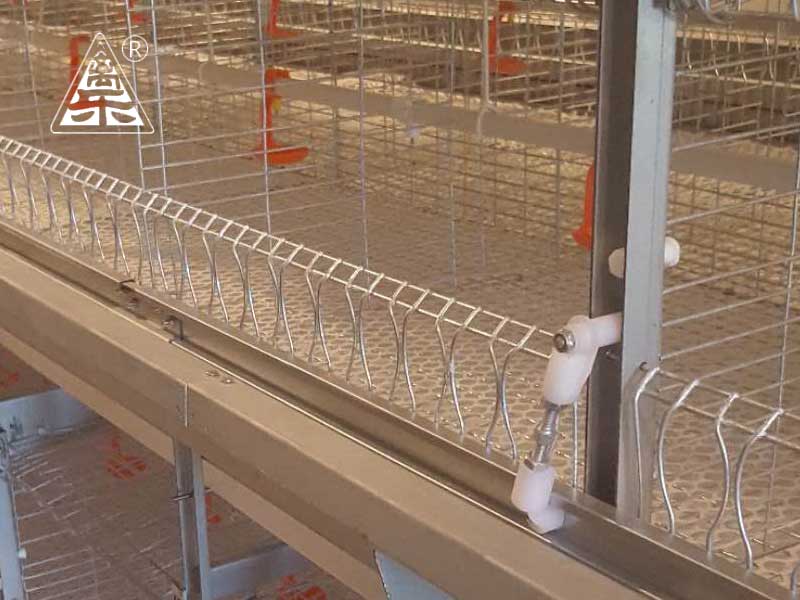Durable Poultry Transport Crates for Safe Chicken Handling
Introduction
Transporting poultry safely and efficiently is a critical aspect of poultry farming and commercial operations. Whether moving chickens from farms to processing plants, between farms, or to markets, the right transport crates ensure minimal stress, injury, and mortality rates. Durable poultry transport crates play a vital role in maintaining bird welfare, biosecurity, and operational efficiency.
This comprehensive guide explores the importance of durable poultry transport crates, their key features, materials used, design considerations, and best practices for safe chicken handling.
---
1. The Importance of Durable Poultry Transport Crates
1.1 Ensuring Animal Welfare
Poultry transport can be stressful for birds due to factors such as temperature fluctuations, overcrowding, and rough handling. Durable crates designed with proper ventilation, secure latching, and smooth surfaces help minimize injuries and stress, ensuring compliance with animal welfare regulations.
1.2 Reducing Mortality Rates
Poor-quality crates can lead to suffocation, broken wings, or leg injuries during transit. High-quality, well-constructed crates prevent such issues, reducing mortality rates and financial losses.
1.3 Enhancing Biosecurity
Transport crates must be easy to clean and disinfect to prevent disease transmission. Durable crates made from non-porous materials help maintain hygiene standards, protecting flocks from infections.
1.4 Improving Operational Efficiency
Sturdy crates withstand repeated use, reducing replacement costs. Stackable and lightweight designs optimize space in transport vehicles, improving logistics efficiency.
---
2. Key Features of High-Quality Poultry Transport Crates
2.1 Material Durability
The best poultry crates are made from robust materials such as:
- Plastic (HDPE or PP): Lightweight, corrosion-resistant, and easy to clean.
- Metal (Galvanized Steel or Aluminum): Extremely durable but heavier and prone to rust if not treated.
- Reinforced Composites: Combine strength and lightweight properties for long-term use.
2.2 Ventilation and Airflow
Proper ventilation prevents heat stress and suffocation. Crates should have:
- Adequate ventilation holes (without sharp edges)
- Slotted designs for continuous airflow
- Adjustable ventilation panels for different weather conditions
2.3 Secure Latching Mechanisms
Escape-proof latches prevent birds from falling out during transport. Features include:
- Self-locking doors
- Reinforced hinges
- Tamper-proof locks for biosecurity
2.4 Ergonomic Design
- Smooth edges to prevent injuries
- Non-slip flooring to avoid leg injuries
- Stackable structure for efficient loading
2.5 Easy Cleaning and Disinfection
- Non-porous surfaces prevent bacterial buildup
- Drainage holes for quick cleaning
- Detachable parts for thorough sanitation
---
3. Types of Poultry Transport Crates
3.1 Plastic Poultry Crates
- Pros: Lightweight, rust-proof, easy to clean
- Cons: Less durable under extreme temperatures
3.2 Metal Poultry Crates
- Pros: Extremely durable, long lifespan
- Cons: Heavy, prone to rust if not galvanized
3.3 Modular and Collapsible Crates
- Pros: Space-saving, easy storage
- Cons: May have weaker structural integrity
3.4 Specialized Crates for Different Poultry Types
- Broiler crates (for meat chickens)
- Layer crates (for egg-laying hens)
- Chick crates (for young birds)
---
4. Best Practices for Safe Chicken Handling During Transport
4.1 Pre-Transport Preparation
- Inspect crates for damage before use
- Clean and disinfect crates between uses
- Avoid overcrowding to prevent suffocation
4.2 Loading and Unloading Procedures
- Use gentle handling techniques to avoid stress
- Ensure proper stacking to prevent crate collapse
- Monitor temperature inside transport vehicles
4.3 During Transport
- Maintain stable temperatures (avoid extreme heat or cold)
- Minimize travel time to reduce stress
- Secure crates to prevent shifting
4.4 Post-Transport Care
- Immediately unload birds upon arrival
- Check for injuries or illnesses
- Sanitize crates before reuse
---
5. Regulatory and Industry Standards
Poultry transport crates must comply with:
- Animal Welfare Regulations (e.g., USDA, EU standards)
- Biosecurity Protocols (preventing disease spread)
- Transportation Safety Guidelines (secure loading, ventilation requirements)
---
6. Choosing the Right Poultry Transport Crates
When selecting crates, consider:
- Durability and material quality
- Ventilation and bird comfort
- Ease of cleaning and maintenance
- Compliance with industry regulations
---
Conclusion
Durable poultry transport crates are essential for safe and efficient chicken handling. Investing in high-quality crates improves animal welfare, reduces mortality rates, and enhances biosecurity. By selecting the right materials, designs, and handling practices, poultry farmers and transporters can ensure smooth operations while adhering to industry standards.
Whether transporting broilers, layers, or chicks, the right crate makes all the difference in maintaining a healthy, productive poultry supply chain.

 Catalogue
Catalogue








 Whatsapp
Whatsapp Telefon
Telefon
Teswir
(0)